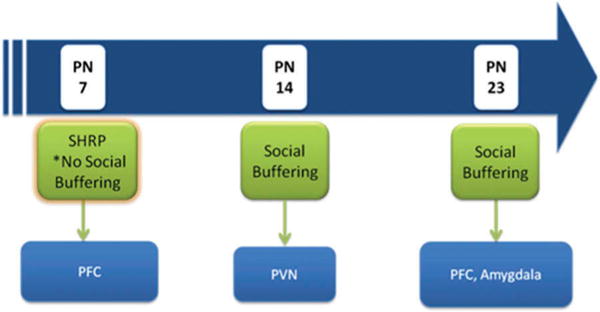Figure 4.

Schematic of potential circuits underlying social buffering of pups by the mother across development. The first period in PN7 pups is characterized by the stress hyporesponsive period (SHRP), when adult-like social buffering does not occur, although maternal cues maintain the SHRP. The ability of maternal odor to activate the prefrontal cortex (PFC) suggests that PFC–paraventricular nucleus of the hypothalamus (PVN) connections may be involved in the mother’s maintenance of pups’ low corticosterone levels. By PN14, maternal cues socially buffers pups, with data suggesting that this primarily occurs by directly blocking the hypothalamic–pituitary axis (HPA) at the level of the PVN. Maternal odor did not activate the PFC or amygdala, suggesting that these routes for social buffering are not active at this age. Finally, in the PN23 pups, the circuitry underlying the processing of maternal cues seems to expand to include areas of the PFC and the amygdala, suggesting that both direct (PVN) and indirect (PFC, amygdala) routes might underlie social buffering.
